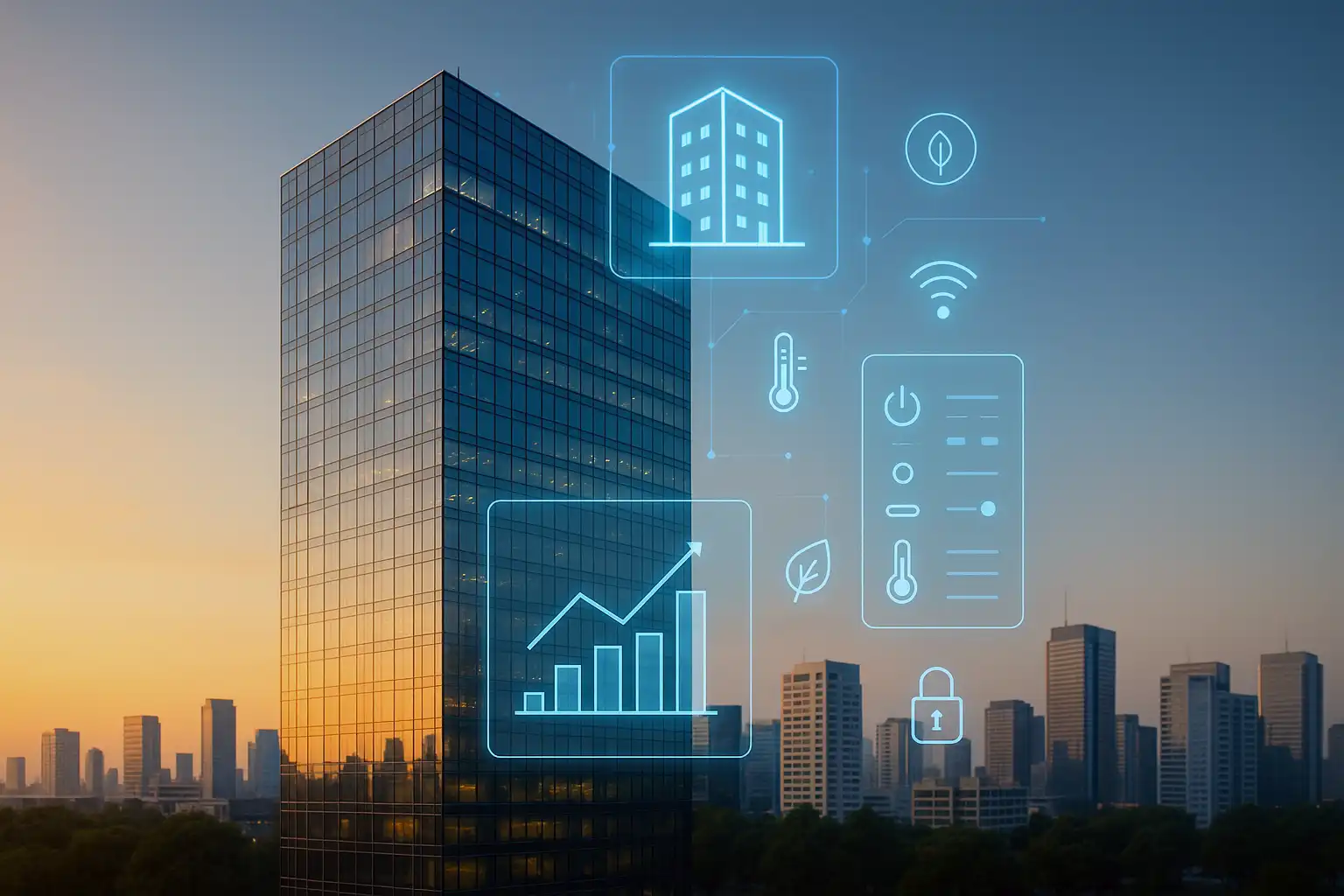Why a Modern Building Management System (BMS) Is Essential
Why a Modern Building Management System (BMS) Is Essential

Building Intelligence:
The Core of Modern Facility Management
1. Centralized Monitoring and Control
A BMS integrates all technical systems - heating, ventilation, air conditioning, lighting, shading, security, and more - into a single centralized platform. Facility managers, operators, and users gain a complete overview of all building processes and can respond quickly to faults, inefficiencies, or changing requirements.
2. Integration of Diverse Technologies
Modern buildings incorporate a variety of systems from different manufacturers and standards - such as KNX, BACnet, Modbus, OPC, or MQTT. A high-quality BMS acts as a translator and mediator between these systems, creating a harmonized overall system that enables unified operation and analysis.
3. Sustainability and Energy Efficiency
Energy consumption can only be optimized when it is transparent. A BMS captures all relevant consumption data in real time, identifies peak loads and unnecessary runtimes, and actively supports the achievement of sustainability goals. Intelligent algorithms and scheduling ensure that systems operate only when necessary.
4. Early Fault Detection and Alarming
Thanks to well-designed alarm and event management, irregularities can be detected and reported immediately - via email, dashboard, or push notification. This minimizes downtime, prevents costly damage, and significantly increases operational safety.
5. Enhanced User Comfort
A BMS not only improves operational efficiency but also enhances everyday comfort: automated lighting and climate control, user-specific scenarios, smart access systems, and room booking solutions are just a few examples of intelligent use in modern buildings.
6. Scalability for All Requirements
Whether a small office building, industrial complex, or hotel with hundreds of rooms - a modern BMS grows with your needs. It can be expanded modularly and adapted effortlessly to new usage types or technological innovations.
7. Documentation, Reporting, and Analysis
Long-term successful building automation is data-driven. A BMS offers detailed logging of all system states, automated reports, and extensive analysis tools - useful for both technical audits and economic evaluations.
Vendor- and protocol-independent integration
KNX, BACnet, Modbus, OPC UA, MQTT, REST API, and more.
Central platform with modular expandability
Whether simple visualization or highly complex building automation - the software grows with your project.
Web-based visualization & mobile apps
Platform-independent access to visualizations – mobile, secure, and intuitive.
High availability and redundancy options
Ideal for critical infrastructures.
Powerful logic and scheduling
Visual Logic Editor, LUA scripting, and individually configurable schedules.
Open interfaces for third-party systems
Integration of hotel management systems, access control, lighting systems (e.g., DALI), video surveillance, and more.

